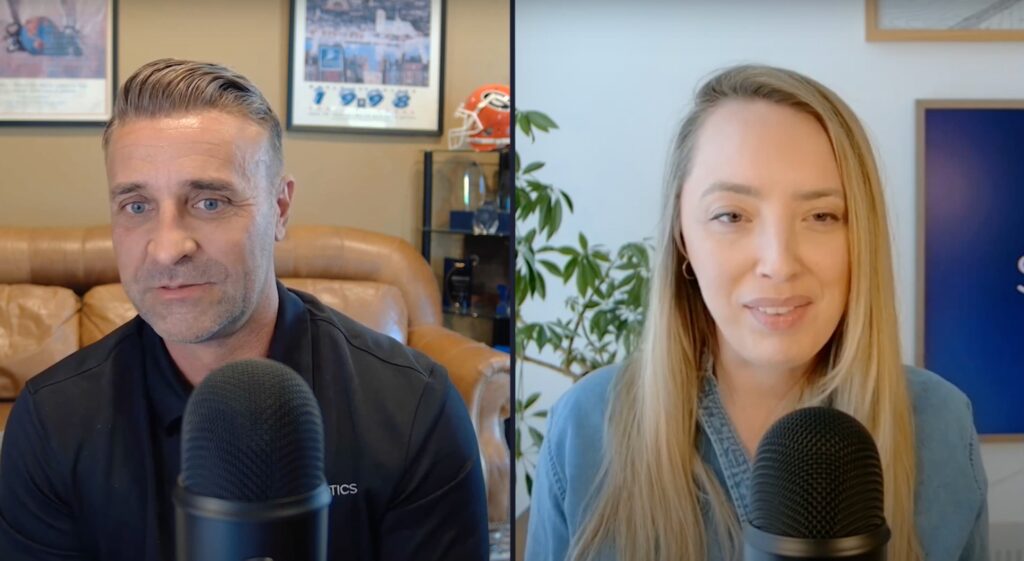How 3PLs Navigate Automation with WMS Upgrades

In this episode, Brian Schuckle, Strategic Account Executive at SVT Robotics brings his vast industry knowledge of the supply chain industry (including his 15 years at Manhattan Associates) to discuss industry shifts and how 3PLs can automate, standardize integrations and navigate automation with WMS upgrades.
Chloe: You’ve been around long enough to see the incredible shifts in the industry. How have 3PLs and large retailers been challenged in automating their facilities?
Brian: The once disparate worlds of large retailers and 3PLs are converging. Retail giants are adapting their own supply chains to function as 3PLs, while smaller retailers are looking to outsource their supply chain operations due to changing consumer expectations and real estate limitations. The demand for two to three-day shipping has reshaped the supply chain landscape.
Chloe: The real estate landscape seems challenging. There’s both increased costs and limited availability of warehouse spaces. How’s automation coming into play?
Brian: The rise in automation is a response to labor shortages and difficulties in scaling warehouse operations. But integrating these technological solutions is hindered by the shortage of skilled programmers and high integration costs, which only seems to worsen as demand increases.
Chloe: With so much growth in technology, particularly robotics and AI, there’s a scarcity of programmers who can integrate these systems efficiently. What are the long-term impacts?
Brian: The demand for these integrations outpaces the availability of skilled developers. This results in slower integration, higher costs, and code that often gets abandoned when developers move on to other opportunities, leaving companies with complex systems they can’t fully comprehend.
Chloe: The average person is now much more aware of supply chains due to recent events. How has this awareness impacted the industry?
Brian: There’s been a significant shift from traditional supply chain roles to integrating more digital expertise. Previously, supply chain roles were linked to manufacturing or engineering, not software development. This shift has brought innovative thinking into the supply chain, which is a positive change.
Chloe: There’s a monumental shift towards digitization in the supply chain. How has this evolution shaped integration approaches?
Brian: Integration processes used to be slow, complex, and inflexible, often relying on specific point-to-point APIs or custom code. However, modern products like iPaaS (Integration Platform as a Service) allow rapid API development. But these solutions can lack adaptability and quick changes in endpoints or evolving business logic.
Brian: Companies like SVT offer low-code products that enable rapid deployment, pre-built connectors, and real-time decision-making based on business logic for seamless orchestration. This empowers businesses with the ability to make real-time decisions within the supply chain, orchestrating data across different subsystems, ensuring the best-of-breed solutions without relying on a single vendor.
hloe: Can you discuss the risks in large automation projects and traditional methods?
Brian: These projects, if they go wrong, could cost C-level personnel their jobs. Traditional automation projects took a long time due to rigidity and complexity, resulting in significant costs to make even small changes, particularly problematic for smaller retailers and 3PLs who have evolving workflows.
Chloe: How does SVT manage integrating multiple partners and their solutions?
Brian: SVT’s platform is tech-agnostic, using domain events to standardize communication between systems. It allows OEM partners to talk to all other partners without changing their language, reducing integration timeframes from months to weeks and months to weeks.
Chloe: Can you share an example of the orchestration capabilities in the SOFTBOT Platform?
Brian: SVT resolved congestion in a client’s facility using Locus Robotics by orchestrating a slotted facility during peak seasons. Another example involved handling super single orders, where the WMS was incapable. SVT filled these gaps without imposing technical debt on existing systems.
Chloe: How do clients manage automation projects when planning WMS upgrades or version changes?
Brian: WMS upgrades and customizations often delay automation initiatives. SVT creates pre-built SOFTBOTS connectors, enabling clients to integrate current systems for automation. This offers a smooth transition during WMS updates by easily replacing old connectors with new ones.
Chloe: When is the right time to start automation projects?
Brian: Begin early, start small, and embrace digitization first. This approach allows for a step-by-step process, leveraging data and IoT integration initially before moving onto complex automation.
Chloe: What are the key attributes of successful automation project planners?
Brian: Companies who understand that automation is necessary, not just a luxury, and prioritize making decisions based on aggregated warehouse data are more likely to succeed.
Chloe: What surprises people about SVT or automation in general?
Brian: SVT’s ability to aggregate and merge data from multiple systems in real-time is often an eye-opener. People realize they can make decisions based on data from various sources in a singular location, unlike traditional manual methods.
Chloe: How do we make sense of data from different systems and leverage it for decision-making?
Brian: SVT simplifies this. It doesn’t just gather data, it standardizes and maps it, making it ready for BI or AI tools. It’s about making informed decisions.
Chloe: Any final advice for those diving into automation?
Brian: Keep it simple. Automation doesn’t have to be complex. Start small, build support from both IT and ops, and avoid waiting too long to digitize. Taking smaller steps is more efficient than trying to automate everything at once.
Chloe: Understood. Thanks, Brian!
Brian: Pleasure, Chloe!
This interview has been edited for length and clarity. Please listen or watch the episode to catch the entire conversation.
